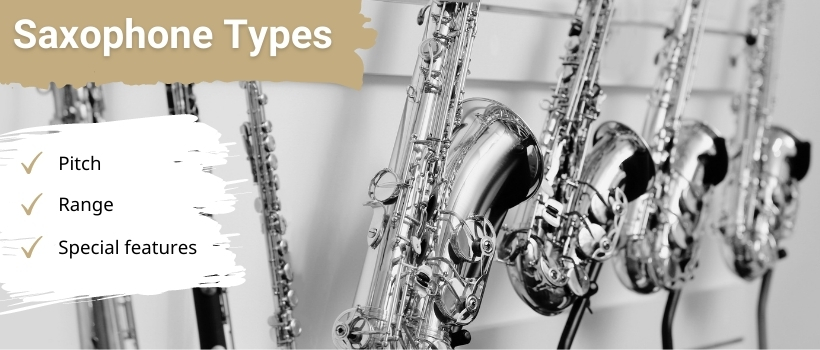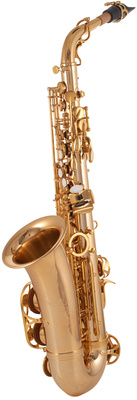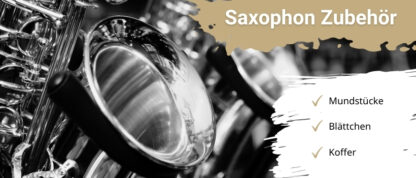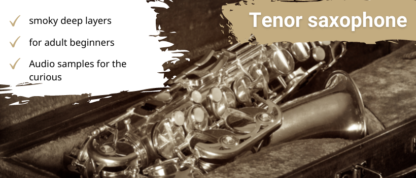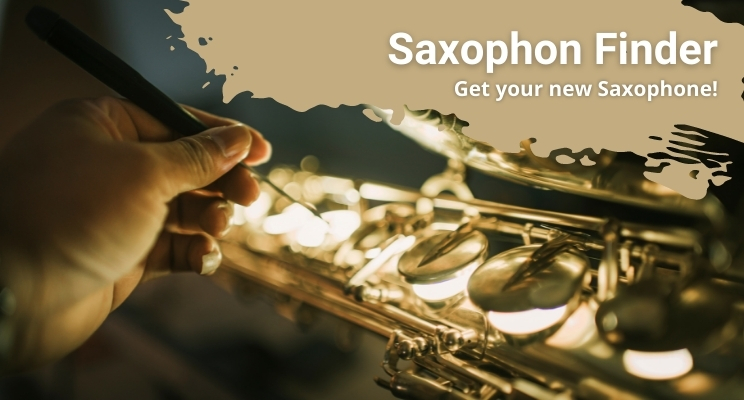As with any instrument, there are different saxophone types with different sound and playing characteristics. However, only a fraction of the twelve possible pitches are regularly played by amateur musicians. The following applies to the different types of saxophone: the larger the instrument, the deeper it sounds. However, since the saxophone is a transposing instrument, the note read from the reed and played does not correspond to the sounding note that comes out. To determine which notes the instrument can play, simply look at the table. Apart from the sound, there are also some differences in handling, because playing very large and heavy saxophones can be a challenge. More about this for the most important saxophones below.
An overview of all saxophone types
| Type | Tuning | c1 sounds like a | Pitch range |
|---|---|---|---|
| Soprillo | B | b1 | as1 – d4 |
| Sopranino | Eb | es1 | des1 – as3 |
| C-Soprano | C | c1 | b – f3 |
| Soprano | B | b | as – es3 (e3) |
| Mezzo soprano | F | f | es – b2 |
| Alto saxophone | Eb | es | des – as2 (a2) |
| C-Melody | C | c | B – f2 |
| Tenor | B | B | As – es2 (e2) |
| Baritone | Eb | Es | (C) Des – a1 |
| Bass | B | B1 | (G1) As1 – e1 |
| Double bass | Eb | Es1 | (C1) Des1 – a |
| Subcontrabass | B | B2 | As2 – e |
Sopranino saxophone
The sopranino is made less often than a normal soprano and is almost the smallest in the saxophone family. Unlike the larger and deeper sounding saxophone types, it has no additional neck, but is made in one piece. The mouthpiece is attached directly to the straight body. A sopranino is tuned to Eb. When a C is played on it, the E-flat, which is three semitones higher, is heard for structural reasons. In order to hit the correct pitch (compared to a non-dispensing instrument such as the piano), an octave (12 semitones) must also be added. Because it sounds so high, the saxophonist must have a lot of experience and a clean embouchure to avoid a squeaky tone. For this reason, the sopranino is more likely to be found as a second instrument for an orchestral ensemble.
Note: On a sopranino, the sounding notes are a sixth (nine semitones) higher than the notated notes (the ones you press on the instrument).
Soprano saxophone

The classical soprano is already somewhat larger than the sopranino, but it does not yet have a neck and only very rarely has a curved body. If a C is picked on it, a B flat sounds two semitones higher. It is therefore tuned to B flat. However, one must bear in mind that the pitch of a saxophone is generally shifted upwards by an octave.
Note: On a soprano saxophone, the sounding notes are one second (two semitones) higher than the notated notes (the ones you press on the instrument).
Alto saxophone
Alto saxophones are the most common instruments for beginners, who are just starting to learn the saxophone. They are handy and relatively easy to play, even for children, in terms of lung volume and embouchure. They have the average size of about 60 – 70 centimetres commonly associated with the saxophone and a well-balanced sound. With them you find both the characteristic neck and a classical lintel, since their body has to be larger overall to produce the lower registers. Like the sopranino, these representatives are tuned to E-flat, so when a C is fingered, an E-flat actually sounds an octave higher.
Note: On an alto saxophone, the sounding notes are a sixth (nine semitones) higher than the notated notes (the ones you press on the instrument).
C-Melody saxophone
In terms of size, the C-melody saxophone lies between the alto and tenor saxophones. It is the only of the saxophone types within the family that does not transpose but plays exactly the notes that are picked on it – similar to the piano. This makes it a good introduction to the world of the saxophone, for example, for connoisseurs of non-transposing flutes.
Note: In the C melody, the note corresponds exactly to what is sounded.
Tenor saxophone
Tenor saxophones correspond to the sopranos and are also tuned in Bb. When the C is played on them, a B flat two semitones above is heard. However, they are considerably larger than alto saxophones and sound deeper and fuller. Due to their size, they are rather unsuitable for children, but they can be considered as a beginner’s instrument for adults if they like the sound. In the video you can hear the differences between the alto and tenor saxophone types.
Note: On a tenor, the sounding notes are one ninth (14 semitones) higher than the notated notes (the ones you press on the instrument).
Baritone saxophone
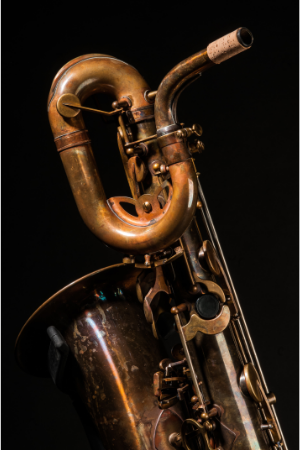
The baritone inspires with its incredibly deep sound, but unlike other types of saxophone, it is not recommended for beginners. It is simply too big and unwieldy. Children cannot hold it at all, because the instrument is almost as big as they are. Tuned like the sopranino in E-flat, the sound shifts upwards by nine semitones. However, it needs an extraordinary lung volume and good support to be able to play longer passages persistently. It is therefore more suitable for adults or experienced musicians. Characteristic of the baritone, as well as of the bass saxophone, is the winding neck.
Note: On a baritone, the sounding notes are a sixth (nine semitones) higher than the notated notes (the ones you press on the instrument).
Bass saxophone
There are even lower saxophone types than the bass saxophone, namely the double bass and subcontra bass. In an ensemble, however, all three have hardly any melodically independent passages; they are rather used to underpin and deepen the piece. They are therefore indispensable for orchestras, but are usually unsuitable for private use – unless you are a great jazz lover and like to play music like in the video.
The bass sounds at the fingered C in B-flat and produces a really booming, low tone. Remember: On a bass, the sounding notes are a ninth (14 semitones) higher than the notated notes (the ones you press on the instrument).
FAQ: Saxophone types
The alto saxophone is most often used for beginners. It is handy and technically offers an easy start – even for children. Adults can also learn with a tenor saxophone, provided it fits in terms of size.
The lowest saxophone is the subcontrabass. It is tuned in B2 and has a range of As2 – e.
In the saxophone family, a distinction is made between 12 different types of saxophone in different tunings.





